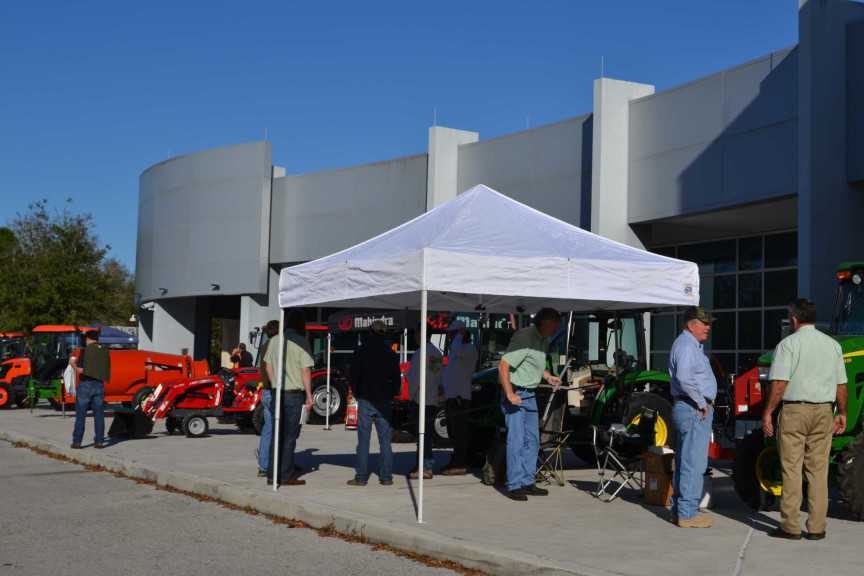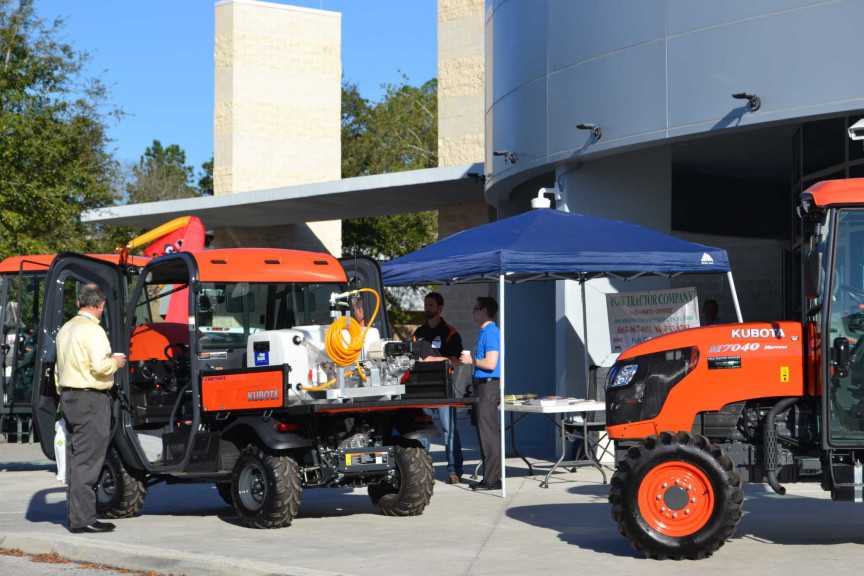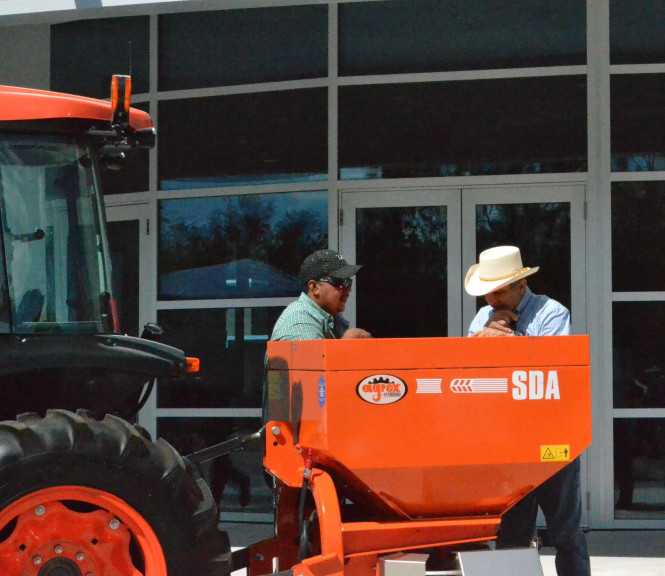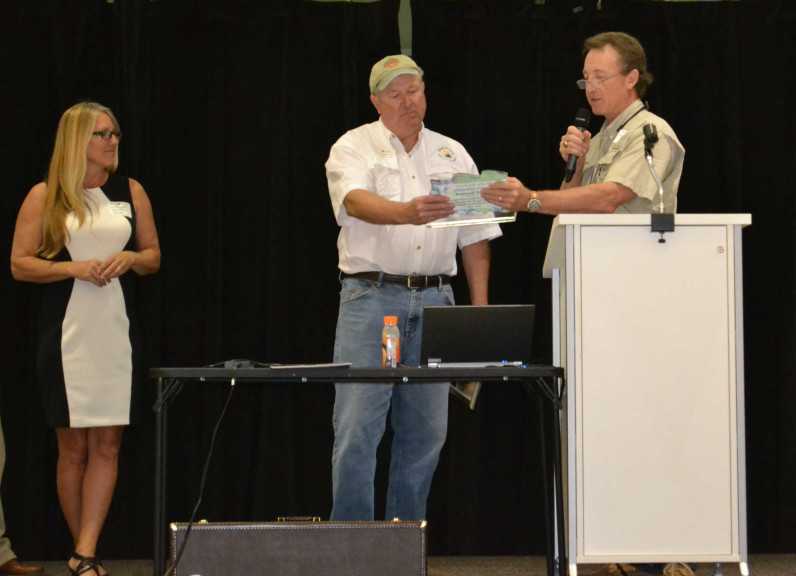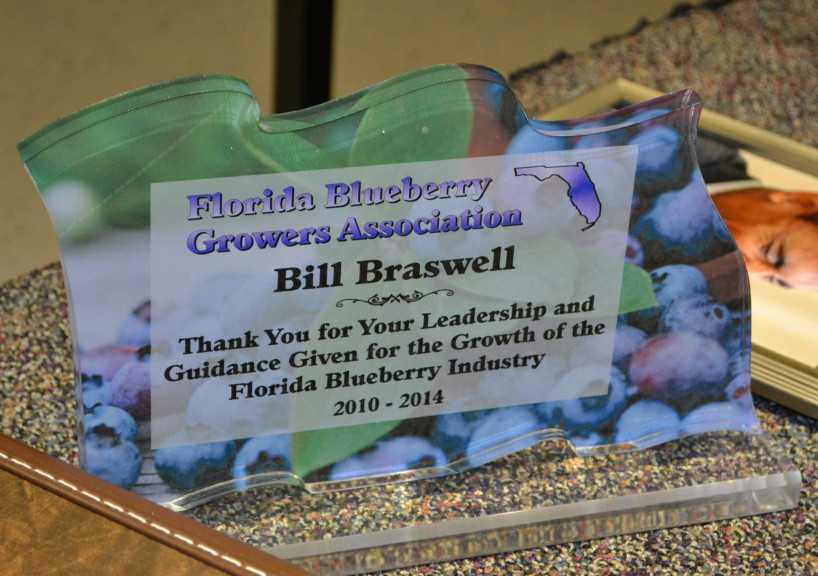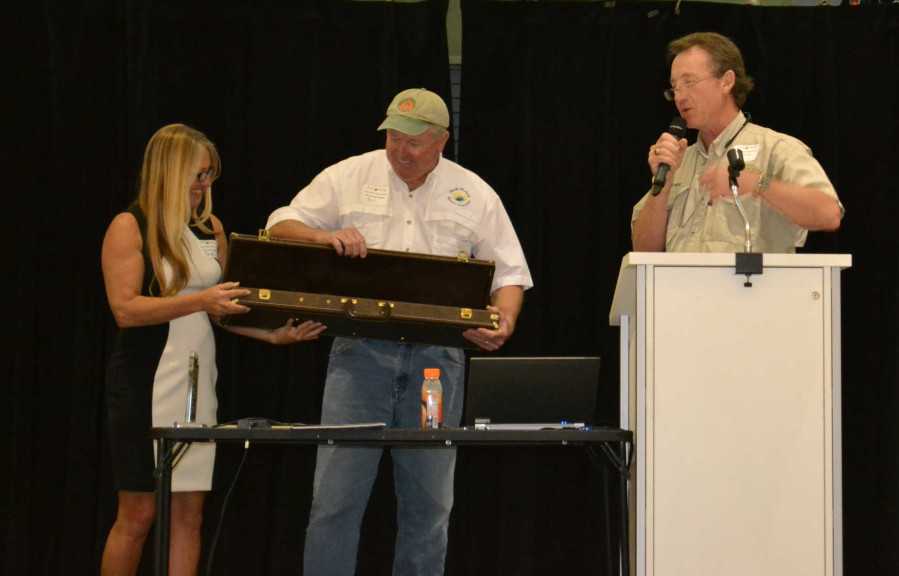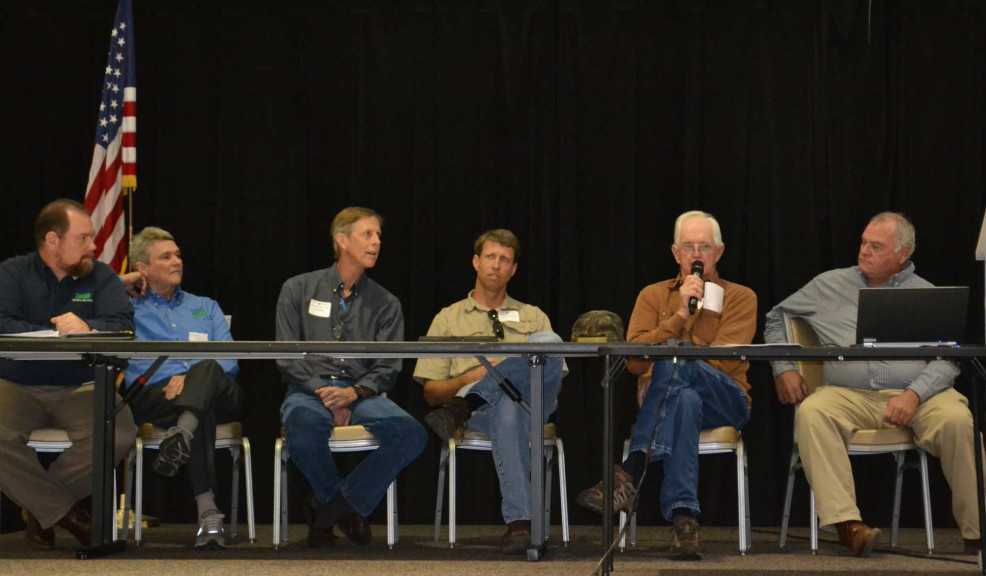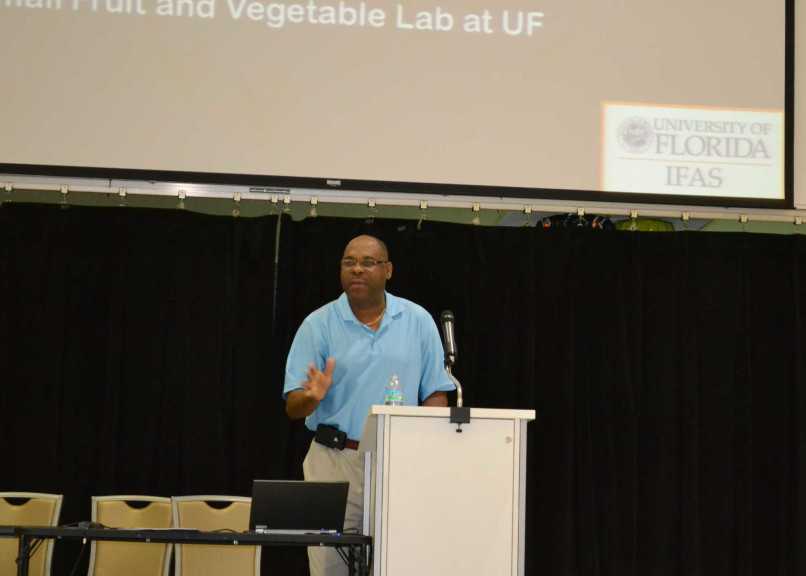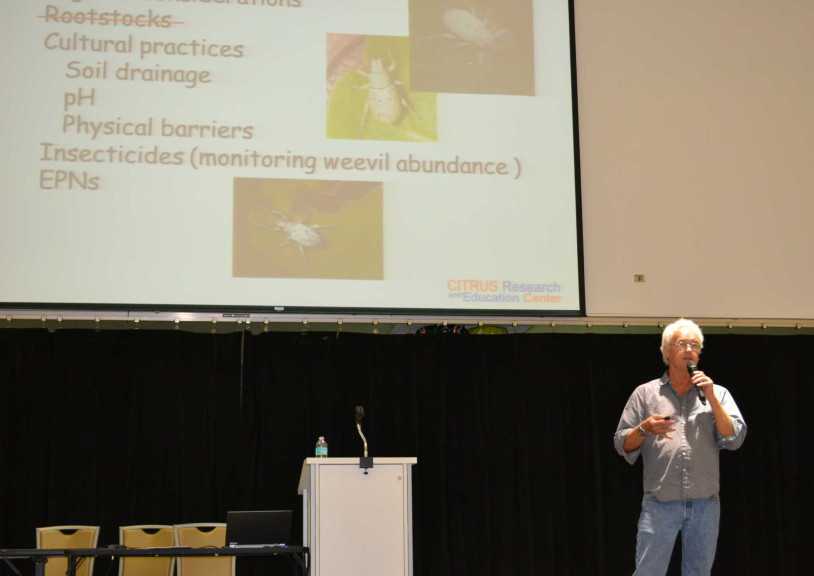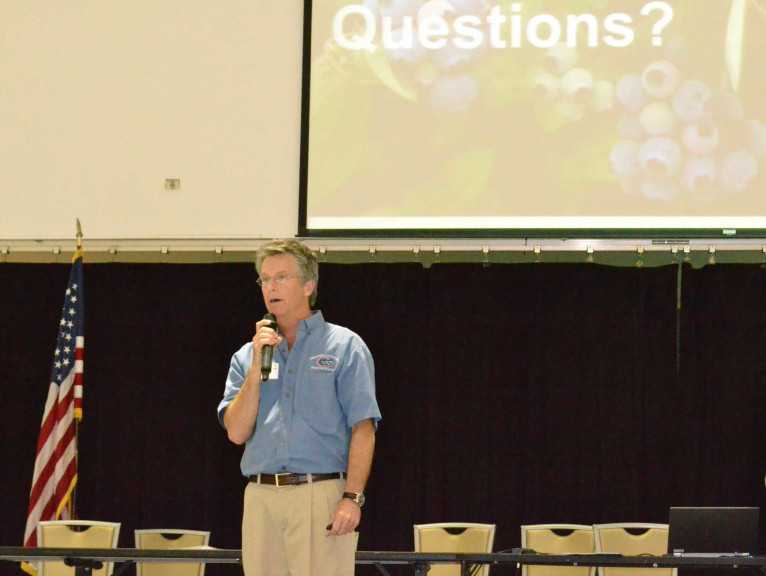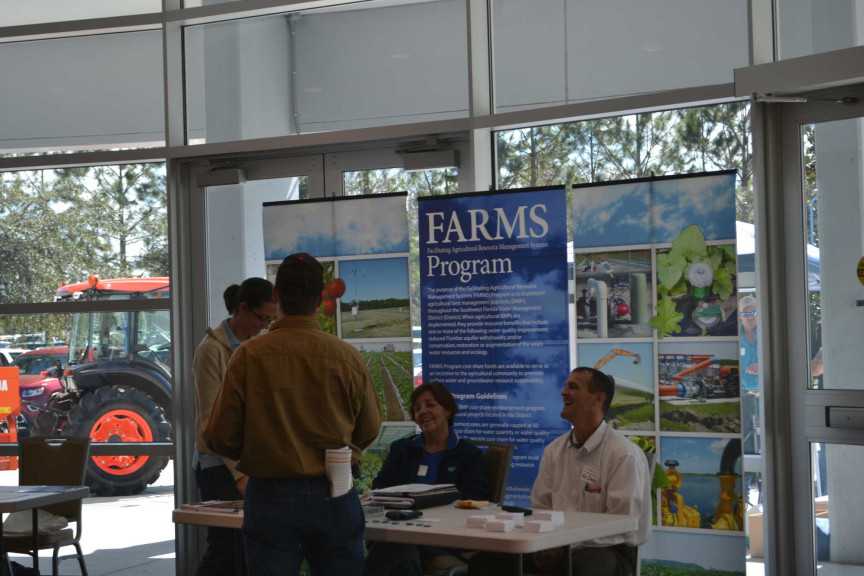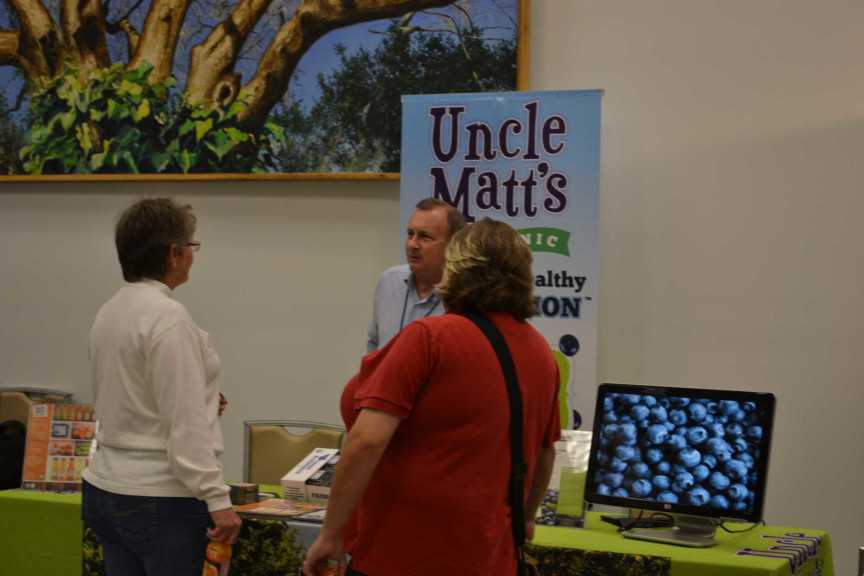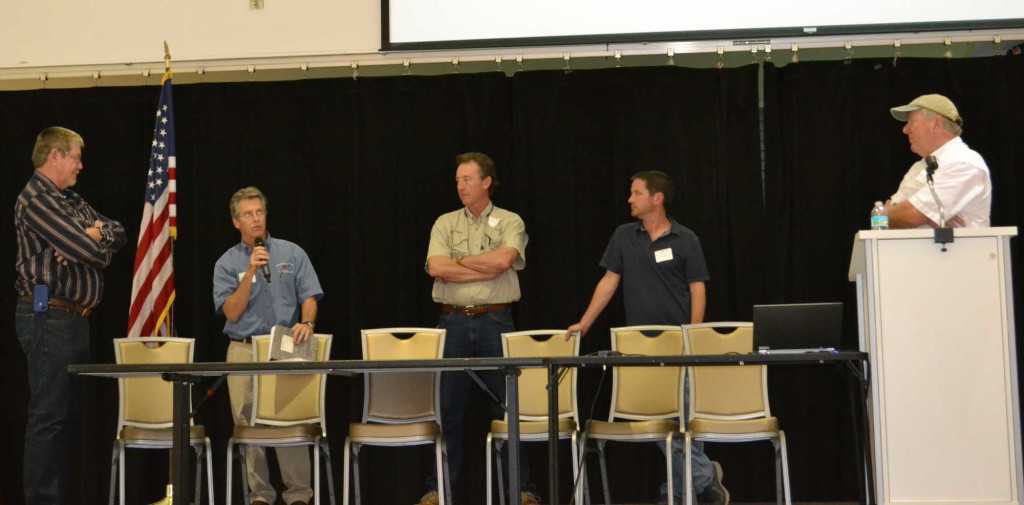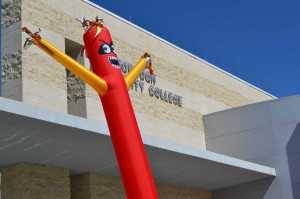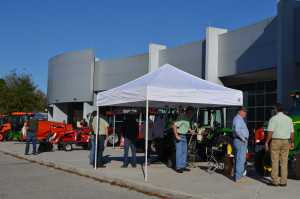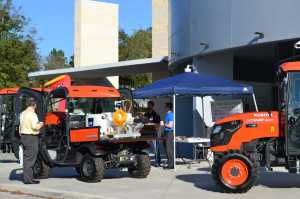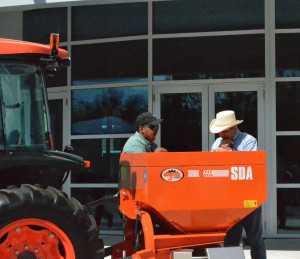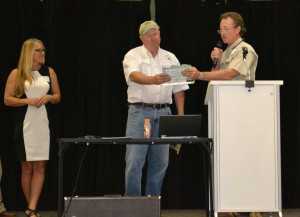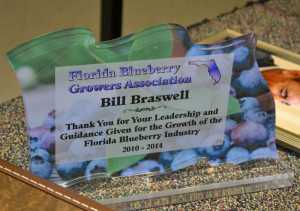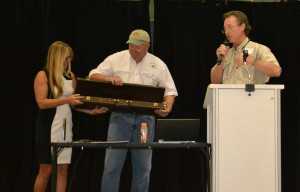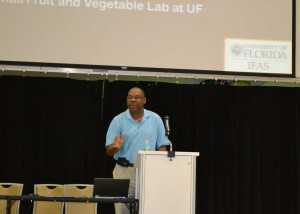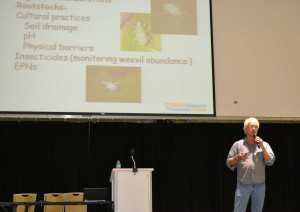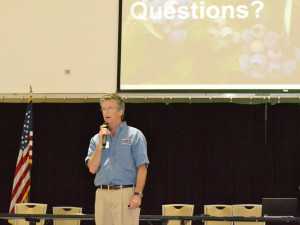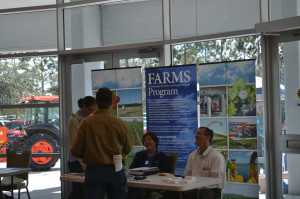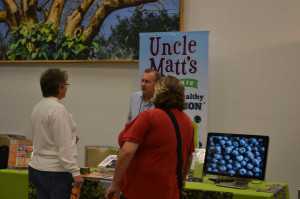Hopes High For Florida Blueberry Crop
[blackoutgallery id=”57155″]
Cautious optimism was abundant at the 2014 Florida Blueberry Growers Association (FBGA) Winter Meeting. The one-day business convention/short course/trade show on the Plant City campus of Hillsborough Community College is typically held the first week in March, but was moved up to accommodate the growing pack of producers hungry for information and curious about where their peers stand as prime picking time nears.
Bill Braswell, whose four-year term as FBGA president is ending, welcomed the crowd of more than 400 participants. While the association’s bi-annual meetings, along with the industry itself, have grown markedly over the years, Braswell said uncertainty remains about exactly how many acres of blueberries there are currently in the state. To address the issue of total acreage and the varieties that comprise it, Braswell said a survey to be conducted by UF/IFAS Extension agents will be sent out to growers for next year. “This will help us get a better handle on what kind of crop we’re going to have,” he said.
For this season, Braswell feels pretty confident in what the Florida market has to offer. “It’s looks really good. At first, we thought we were going to be a bit early. But with the cold weather in January, it’s pushed it back to pretty much the regular schedule. Overall, I’m thinking it’s going to be somewhere around 25 million pounds (a record yield), or maybe even a little bit more.”
Adding to the momentum, Braswell told attendees to watch for a major announcement planned at next week’s U.S. Highbush Blueberry Council’s meeting in California. Not being able to divulge all the details, Braswell did say it was related to recent developments in medical research. “It’s good news for all of us,” he said.
In addition to the business portion of the agenda, which also featured the introduction of new officers, including incoming association president Dudley Calfee of Ferris Farms, the short course covered a range of production and crop protection topics. Two major issues (bird control and the effectiveness of hydrogen cyanimide) were presented as panel discussions.
Angry Birds
Birds, especially cedar waxwings, have been the bane of Florida blueberry growers during the last couple of seasons. A group of growers, including Alto Straughn, Dan Ebbecke, Chad Dumke, and Dave Webber were invited to discuss what has worked and what has not.
According to the panel members, bird screamers, bangers, and propane cannons are the most-used tools by local growers – to the chagrin of nearby residents. “If you keep (the birds) moving, then they’re not eating your fruit,” Ebbecke said. “But it takes man-hours. If you have a split operation, you’re going to have two or more people constantly monitoring to make sure they’re not eating all your fruit. You can step away with a cannon, but they’ll get used to the noise. You need to adjust where it goes off every two minutes or longer, or they’ll just tune it out.”
Straughn, who also noted robins and various finches as other winged pests, agreed. “We have three of four people full-time on bird control. We use a lot of screamers and bangers. The main thing we do is to keep them flying around. That’s about all you can do.”
Randomness is key for control, said Demke. “Don’t do the same thing over and over. Just keep mixing things up. It all works for a little while, but they’re eventually going to get used to it, especially as they get more desperate.”
Demke offered up an interesting theory in which he thinks more research is needed. “It seems if you make them desperate enough, keep them flying, they almost go into a survival mode, which increases the problem.”
Equally as frustrating as the birds themselves, all agreed obtaining depredation permits from the U.S. Fish and Wildlife Service has been quite a struggle. Tony Duffiney, assistant state director, USDA-APHIS, was on hand to help explain the permitting process. “Our role is to advise the Fish and Wildlife Service and you all on different methods likely to work,” he said. He echoed the panelists in saying that variety (e.g., bangers, screamers, cannons, etc.) is key. “These depredation permits are just another tool,” he said.
With an eye on protecting migratory birds like cedar waxwings, the U.S. Fish and Wildlife Service makes the permit process difficult, Duffiney admitted. To help streamline the application process, Duffiney suggested the following tips when filling out the forms:
- Know the birds you’re dealing with
- Show a pattern of non-lethal harassment
- Document your losses (be thorough)
Once completed, Duffiney instructed growers to send the forms to his office for review and recommendation. “They (U.S. Fish and Wildlife) understand you guys can’t stand out there all day with shotguns,” he said. “But they’re scared if they issue these permits, then there’s going to be a pile of dead birds.”
Dormex Dilemma
Hydrogen cyanimide (aka, HC or Dormex) continues to throw Florida blueberry growers for a loop. The plant growth regulator normally applied in the winter has yielded mixed results this season as indicated by growers, which is in contrast to first responses from a survey sent out to association members a few months back.
The short course finale featured a panel discussion about this season’s experiences with HC. Braswell, along with growers Gary Smith, Dustin Lowe, Calfee, and Jeff Williamson of UF/IFAS all seemed to be searching for answers given the random results seen using the product this season.
Calfee said there are so many variables. Calibration is one that is crucial. He cautioned allowing spray techs mix the product. The slightest miscalculation can be costly. “We always try to have a manager on our farm mix it,” he said.
In addition, Calfee suggested doing test runs where Dormex isn’t sprayed at all. “Block off some experimental plants, harvest the fruit, and weigh it,” he said. “That’s really the only way you can tell what you’re getting. You can’t see a 25% difference of yield on a plant.
“Not every bloom becomes a berry, and not every berry is the same size. The plant will compensate to a great degree. Try to run some trials so you can really find out what you think you’re seeing with your eyes ends up in your wallet.”
Since there is such a chasm between initial survey feedback and actual results, Braswell encouraged attendees, if they hadn’t done so yet, to submit surveys about their Dormex experience this season. “The people who filled them out very shortly after they sprayed and said they had great results, they probably wish they could take it back.”
With all participants acknowledging much is still needed to learn about the optimal way to use the product, Braswell mused about future possibilities.“By the time we figure Dormex out, (UF/IFAS blueberry breeder) Jim Olmstead will have a variety that doesn’t need it, which is what we really need.”





